Comparison: iPhone 14 models and iPhone 14 Pro models.
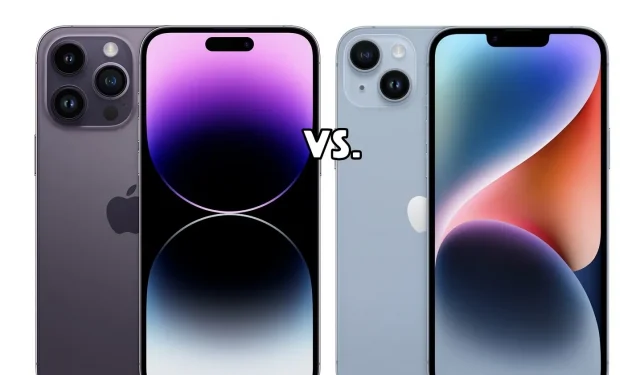
Anyone looking to set an alarm to be the first to pre-order one of the new iPhones in 2022 has an important choice to make: get a cheaper iPhone 14 or iPhone 14 Plus, or get a more expensive iPhone. 14 Pro or iPhone 14 Pro Max.
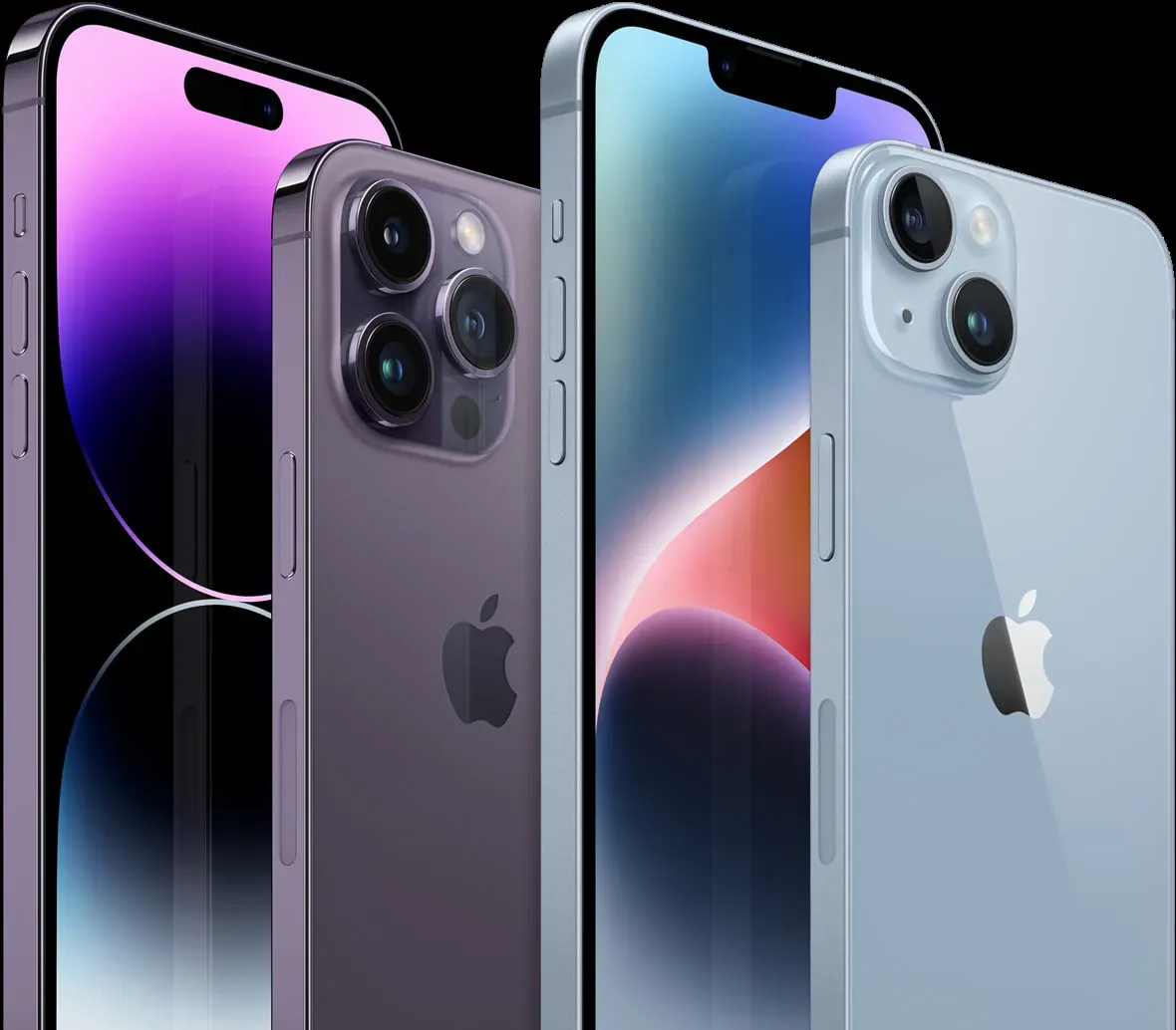
Obviously, the former are for those who just want a powerful smartphone, while the latter are for those who demand the best of the best. But what technical differences distinguish these phones from each other? We’re glad you asked because we’re going to walk you through it all in this article.
iPhone 14/14 Plus vs. iPhone 14 Pro/14 Pro Max
Colors and materials
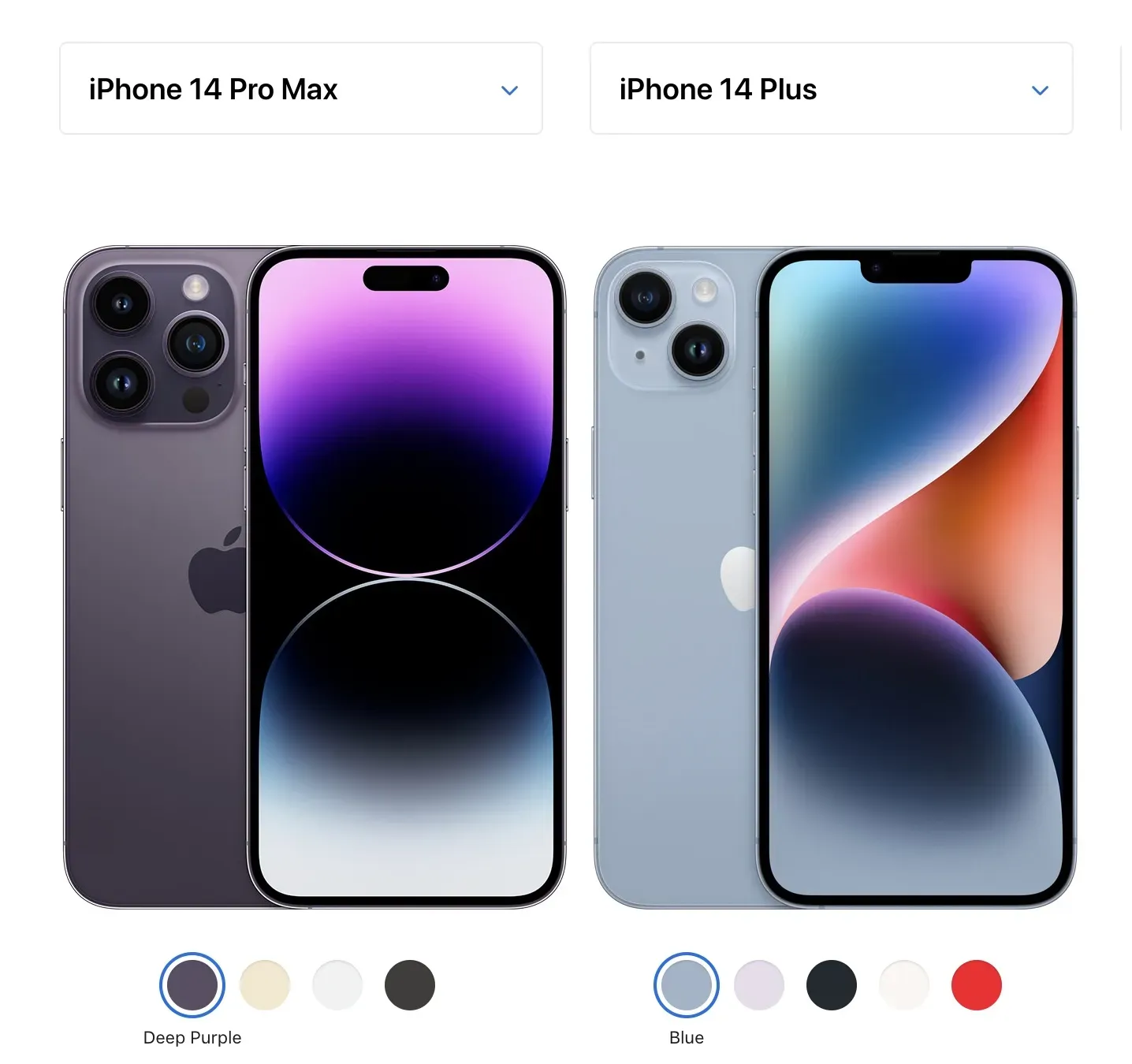
The colors of the base iPhone 14 and 14 Plus will be different from the more upmarket iPhone 14 Pro and 14 Pro Max. The cheaper iPhone 14 and 14 Plus are available in Blue, Purple, Midnight, Starlight, and (PRODUCT) RED, while the more expensive iPhone 14 Pro and 14 Pro Max are available in Deep Purple, Silver, Gold, and Space Black.
The materials are also slightly different. While all models come with Ceramic Shield front glass, considered the most durable glass for smartphones, the iPhone 14 and 14 Plus are made from aerospace grade aluminum, while the iPhone 14 Pro and 14 Pro Max are made from surgical grade stainless steel.
Computing power
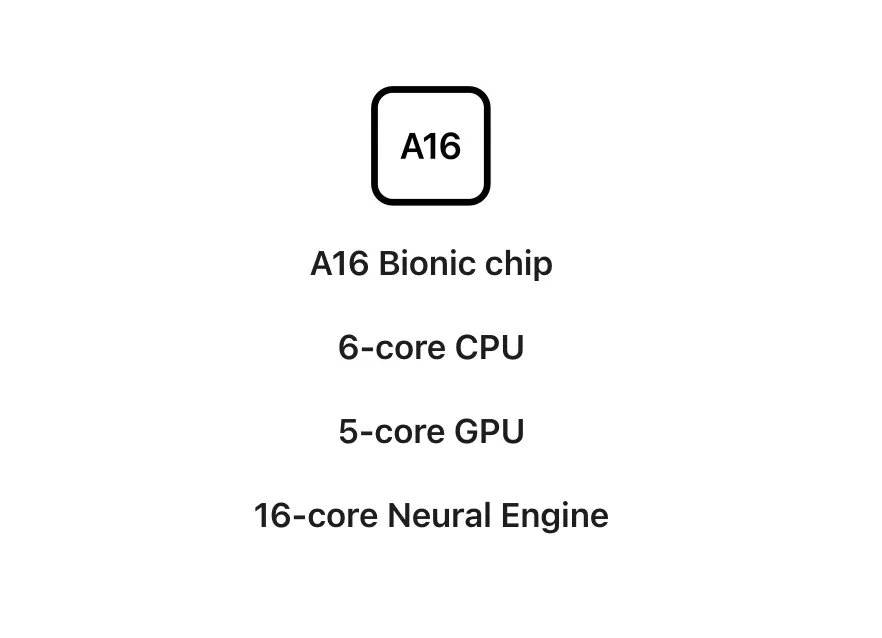
In terms of performance, the differences are reportedly minor, but the A16 Bionic chip is more efficient, supporting some of the unique new features of the iPhone 14 Pro and 14 Pro Max, which we’ll talk about later.
Display technology
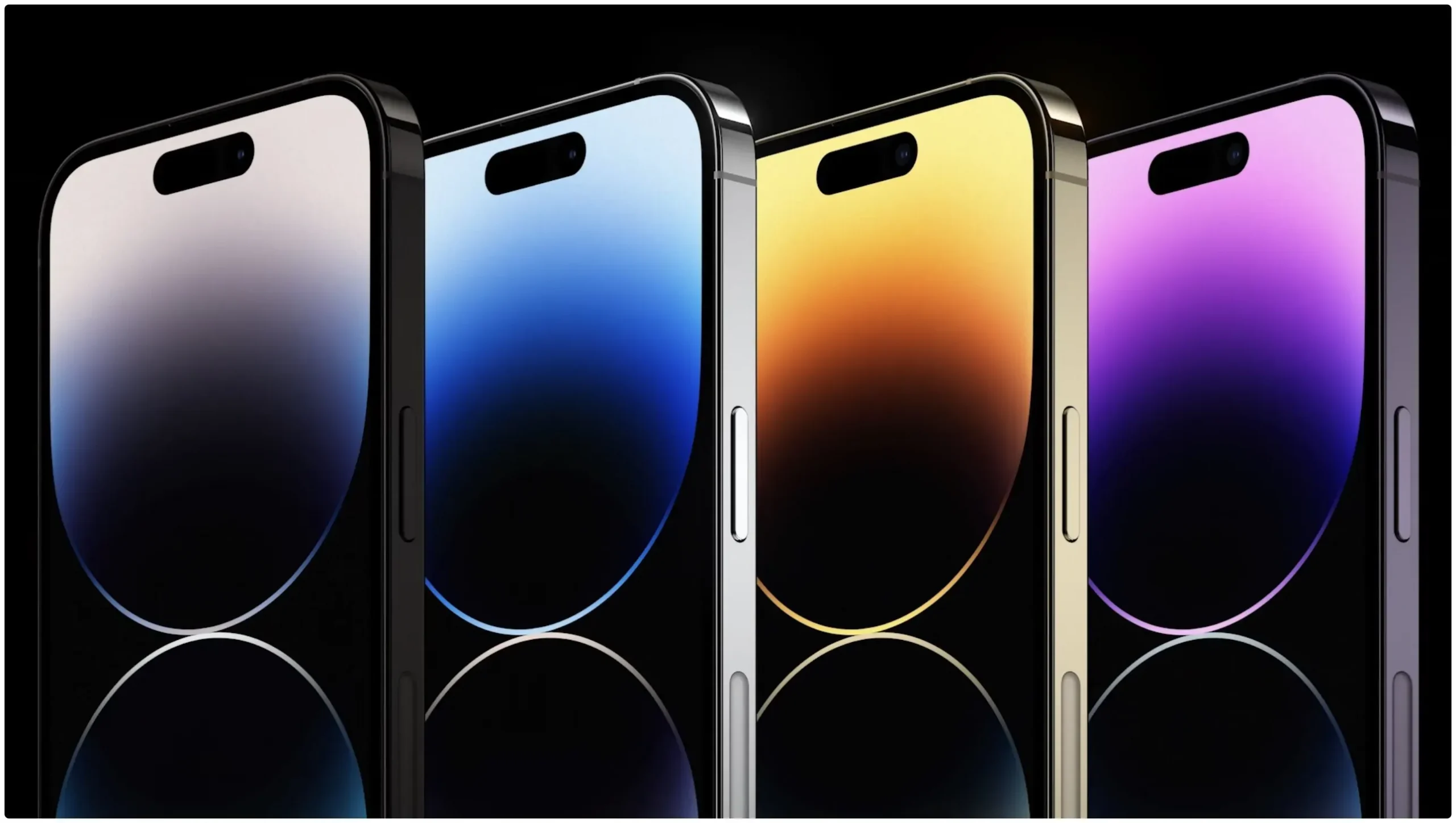
Comparing the displays on the two 2020 iPhone lines, we’re starting to see some significant differences. While both the iPhone 14 and 14 Plus and the iPhone 14 Pro and 14 Pro Max feature a 6.1-inch or 6.7-inch display, which Apple considers good enough to be called a Super Retina XDR display, it goes without saying that the display in “professional”models goes beyond just adding a few extra pixels.
First, only “professional”models support ProMotion technology, which provides a smooth refresh rate of up to 120 frames per second when needed for the smoothest animation possible. Also unique to “professional”models is the Always-On Display feature, which lowers the display refresh rate to 1Hz to reduce power consumption when the beautiful iOS 16 lock screen aesthetic shines.
You’ll also find that the iPhone 14 and 14 Plus have the infamous “notch”we’ve had since the iPhone X arrived in 2018, while the iPhone 14 Pro and 14 Pro Max have a new punch-hole design. which Apple calls Dynamic Island. This so-called Dynamic Island intelligently uses the OLED’s pixel on/off capabilities to create a seamless user experience with pop-ups and shortcuts tailored to any app you might be using.
The “professional”phone displays are also capable of delivering significantly higher levels of display brightness than the standard iPhone 14 and 14 Plus lineup. While the latter can reach 800 nits in most conditions and up to 1000 nits with HDR, “professional”displays can almost double the brightness with 1000 nits in most conditions, 1600 nits with HDR and up to 2000 nits at a time. like outdoors in direct sunlight.
Photo and video recording
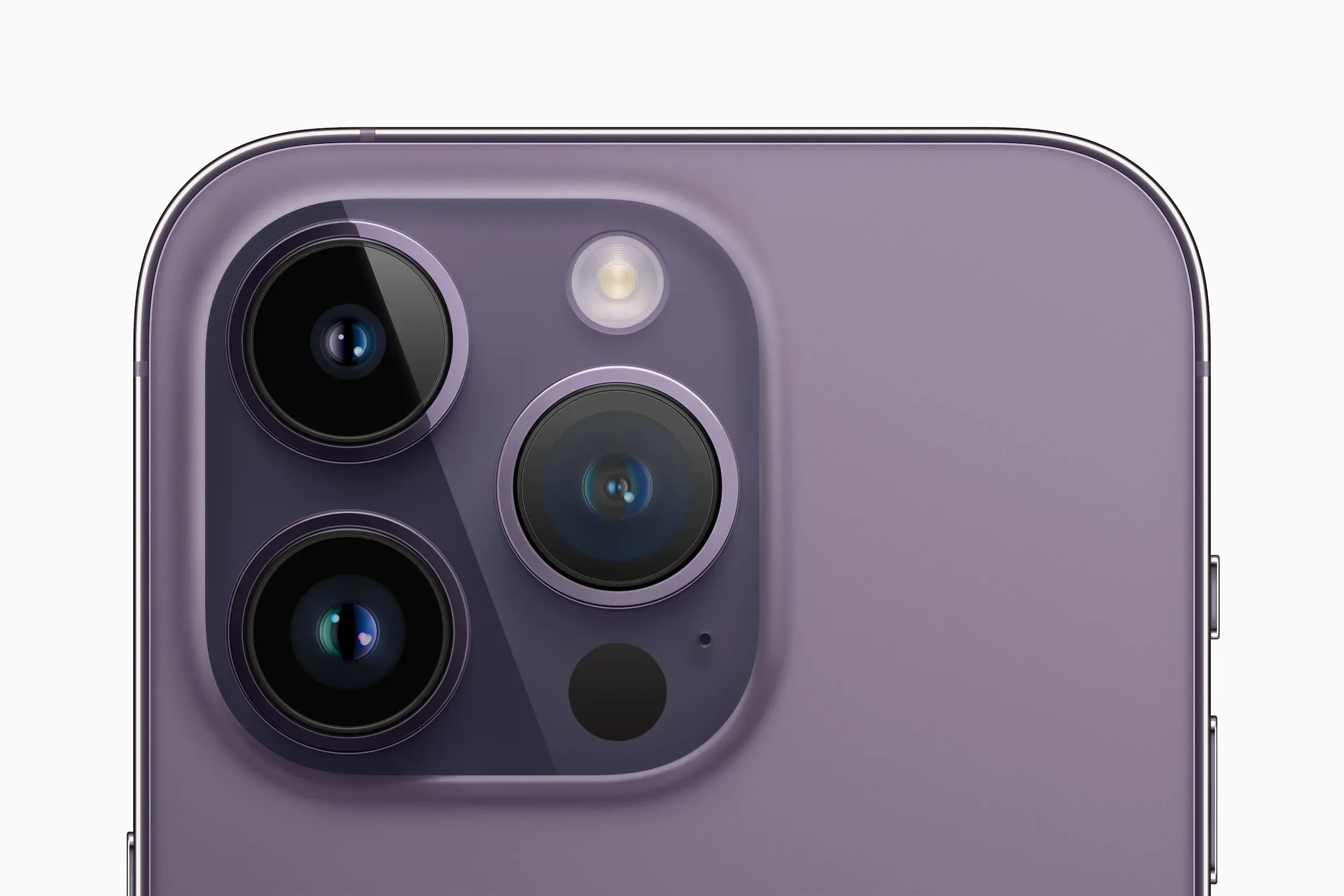
There are some pretty significant differences in camera systems between the standard iPhone 14 and 4 Plus models and the top-tier iPhone 14 Pro and 14 Pro Max models. From the start, the iPhone 14 and 14 Plus feature a dual 12MP camera system with a standard camera and an ultra-wide camera, while the iPhone 14 Pro and 14 Pro Max feature a Pro triple camera system with a 48MP camera. main camera, 12-megapixel ultra wide-angle camera and 12-megapixel telephoto lens. Additional specification differences can be found below:
iPhone 14 and 14 Plus:
- Primary: ƒ/1.5 aperture
- Ultra Wide: ƒ/2.4 aperture
iPhone 14 Pro and 14 Pro Max:
- Primary: ƒ/1.78 aperture
- Ultra wide: ƒ/2.2 aperture
- Telephoto: ƒ/2.8 aperture
Beyond the tech specs, the “professional”models also have additional photo enhancement features that you won’t find on the iPhone 14 and 14 Plus. One includes second-generation sensor-shift optical image stabilization to reduce camera shake while shooting, the other includes a boost to both the camera’s digital and optical zoom capabilities, and of course there’s also the new True Tone adaptive flash system.. pro’ which provides more efficient lighting for your camera depending on the lighting conditions around you.
You can also do more in the Camera app on “pro”phones than you can on the iPhone 14 and 14 Plus models, like taking night mode portraits, taking close-up macro photos, and using Apple ProRAW to breathe as much detail into your photo as possible to subsequent editing on the computer. The same macro capabilities are available when shooting video.
Warehouse capacity
All models in the iPhone 14 lineup are available in 128GB, 256GB, 512GB storage configurations, but only the “Pro”models are available in 1TB storage configurations.
Battery life
The iPhone 14 and 14 Plus can deliver up to 26 hours of video playback, 20 hours of video streaming, and 100 hours of audio playback, but as you’d expect from a phone with a more efficient chip, the iPhone 14 Pro and 14 Pro Max are capable of up to 29 hours of video playback., 25 hours of video streaming and 95 hours of audio playback. This is in line with the increase in battery life in “professional”models in general.
Other miscellaneous differences
The iPhone 14 Pro and 14 Pro Max also have the following features that the iPhone 14 and 14 Plus don’t have:
- ProRes video recording support (front and rear cameras)
- Support accurate dual frequency L1 and L5 GPS
- LiDAR Scanner Boosting Augmented Reality Accuracy
- Professional models are slightly heavier due to the fact that they are made of stainless steel rather than aluminum.
Conclusion
While the iPhone 14 and 14 Plus are certainly not far behind in the smartphone market, it’s worth noting that the iPhone 14 Pro and 14 Pro Max are still the best phones out there. However, there’s room for savings if you don’t need the extra cost, as the iPhone 14 starts at $799 and the iPhone 14 Pro starts at $999.
Do you plan to pre-order the iPhone 14, 14 Plus, 14 Pro, or 14 Pro Max?
Leave a Reply